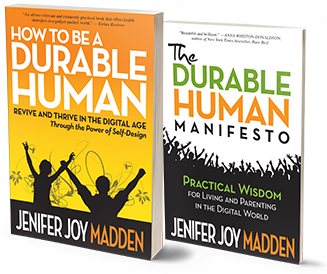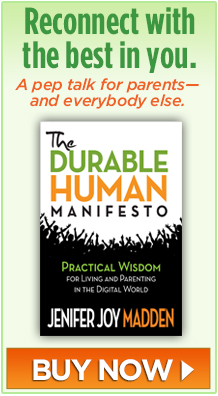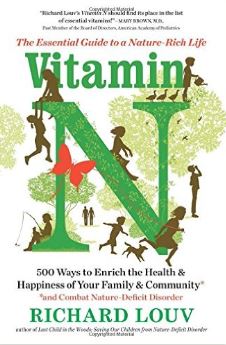Parents want to raise well-rounded kids who are comfortable in their own skin and with navigating in the natural and digital worlds. These advice books help parents and other care-givers to achieve that goal or to care for themselves in the process.
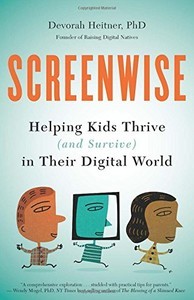 The sensible guide to raising digital citizens we’ve all been waiting for, Screenwise: Helping Kids Thrive (and Survive) in Their Digital World finally gets how kids use technology and how parents can support their efforts.
The sensible guide to raising digital citizens we’ve all been waiting for, Screenwise: Helping Kids Thrive (and Survive) in Their Digital World finally gets how kids use technology and how parents can support their efforts.
Author Devorah Heitner is thoroughly respectful of both sides of the equation and never talks down to, judges, or belittles anyone. Her book is chock-full of practical use-‘em-now tips and she gently instructs and builds the confidence of kids’ first and best digital mentors: their parents. This book doesn’t just skim the surface, it gets gritty and granular, supplying the words and tools we all need.
Among Heitner’s most important points:
- Choose mentoring your child over simply monitoring what they do online.
- Have clear, consistent boundaries and explain them to your kids.
- Pay attention when your kids need you, or as Heitner says, “Be here now.” Why that’s absolutely crucial.
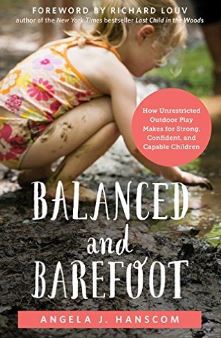 Another must-read, Balanced and Barefoot: How Unrestricted Outdoor Play Makes for Strong, Confident, and Capable Children supplements Screenwise by addressing kids’ vital needs beyond technology. Author Angela Hanscom is the occupational therapist whose disturbing findings I wrote about here. She points out the discomfiting truth that more and more kids are failing tests of core muscle strength and balance, they’re too easily frustrated, and “cry at the drop of a hat.” As Hanscom wisely points out, “With long hours sitting in school followed by inappropriate amounts of homework and being rushed to after-school activities, it is no wonder our children are having increased anxiety, difficulty playing independently and creatively, and trouble developing sensory skills.” She skillfully and simply explains why and how to correct those problems, mainly through more unstructured play and outdoor physical activity.
Another must-read, Balanced and Barefoot: How Unrestricted Outdoor Play Makes for Strong, Confident, and Capable Children supplements Screenwise by addressing kids’ vital needs beyond technology. Author Angela Hanscom is the occupational therapist whose disturbing findings I wrote about here. She points out the discomfiting truth that more and more kids are failing tests of core muscle strength and balance, they’re too easily frustrated, and “cry at the drop of a hat.” As Hanscom wisely points out, “With long hours sitting in school followed by inappropriate amounts of homework and being rushed to after-school activities, it is no wonder our children are having increased anxiety, difficulty playing independently and creatively, and trouble developing sensory skills.” She skillfully and simply explains why and how to correct those problems, mainly through more unstructured play and outdoor physical activity.
Hanscom speaks the Durable Human language when she describes the benefits:
“Moving the body, stimulating the senses, and igniting the imagination so that the whole body and brain are engaged at once. Neurons are firing on all cylinders as children explore their surroundings. They are fully alive.”
It’s no wonder Hanscom was a main speaker at the conference started by the leader of the nature-play revival: Richard Louv. If you haven’t read his seminal Last Child in the Woods: Saving Our Children From Nature-Deficit Disorder stop right now and buy it. “Nature-Deficit Disorder” is Louv’s term for “the price paid, particularly by children, for our societal disconnect from the natural world.” Also, pick up his latest: Vitamin N: 500 Ways to Enrich the Health & Happiness of Your Family & Community. The “N” stand for “Nature” and the book is a full-length listicle of ways to weave it into your family’s life. Louv suggests simple things like letting your kids make mud puddles, listen to birds, and roll down grassy slopes; as well as Big-picture pursuits, like my personal favorite: pulling out invasive plants and bringing back biodiversity to your own back yard.
To do the best job (and be most durable), parents also need to care for themselves in body and mind. These books each bring a refreshing perspective.
 Thanks to Louv, my books were on the authors’ table at his latest conference and I was shoulder-to-shoulder with Gregory Ripley and his Tao of Sustainability: Cultivate Yourself to Heal the Earth. Tao (also known as dao) is an ancient Chinese word that refers to the ways of Nature, or the natural course of things. In his book, Ripley demonstrates many ways to care better for your self and the planet, many drawn from Chinese philosophical thought and the tradition of Chinese medicine. Through poems, sayings (of some of my #1 sages, including Thich Nhat Hanh and Neil DeGrasse Tyson), and simple techniques such as his Touching Nature exercise, Ripley presents a holistic viewpoint:
Thanks to Louv, my books were on the authors’ table at his latest conference and I was shoulder-to-shoulder with Gregory Ripley and his Tao of Sustainability: Cultivate Yourself to Heal the Earth. Tao (also known as dao) is an ancient Chinese word that refers to the ways of Nature, or the natural course of things. In his book, Ripley demonstrates many ways to care better for your self and the planet, many drawn from Chinese philosophical thought and the tradition of Chinese medicine. Through poems, sayings (of some of my #1 sages, including Thich Nhat Hanh and Neil DeGrasse Tyson), and simple techniques such as his Touching Nature exercise, Ripley presents a holistic viewpoint:
“Many of the meditations, awareness exercises, and movement practices suggested in this book aim at reconnecting us with nature, but they also serve to reinforce our sense of mind-body connection…and identity as part of the universe.”
 A highly personal yet universal story, with lessons about how and why you should cherish your self and the earth, is the memoir Blooming Into Mindfulness: How the Universe Used a Garden, Cancer, and Carpools To Teach Me That Calm is the New Happy. A formerly hard-charging urban-dwelling economist, Martha Brettschneider takes us on a journey through her confrontation with cancer and subsequent healing through the durable human skill of gardening. As she discovers, “My true self, it turns out, is quite a bit different from the person I had thought I was supposed to be.” We learn how planting and working the soil helped her develop mindfulness, a practice she defines as “paying attention to the present moment and observing one’s thoughts non-judgmentally, without getting carried away with past or future stories.” Using her rapier wit, Brettschneider imparts the wisdom she gained “to learn to listen more closely to my heart and embrace my true self—to ‘develop’ and ‘flourish,’ as it were”—certainly watchwords for us all.
A highly personal yet universal story, with lessons about how and why you should cherish your self and the earth, is the memoir Blooming Into Mindfulness: How the Universe Used a Garden, Cancer, and Carpools To Teach Me That Calm is the New Happy. A formerly hard-charging urban-dwelling economist, Martha Brettschneider takes us on a journey through her confrontation with cancer and subsequent healing through the durable human skill of gardening. As she discovers, “My true self, it turns out, is quite a bit different from the person I had thought I was supposed to be.” We learn how planting and working the soil helped her develop mindfulness, a practice she defines as “paying attention to the present moment and observing one’s thoughts non-judgmentally, without getting carried away with past or future stories.” Using her rapier wit, Brettschneider imparts the wisdom she gained “to learn to listen more closely to my heart and embrace my true self—to ‘develop’ and ‘flourish,’ as it were”—certainly watchwords for us all.
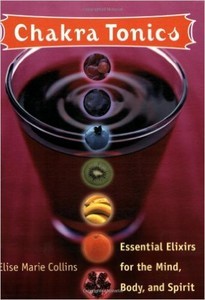 What a pleasure it’s been to consume the work of yoga and health coach Elise Marie Collins, whom I met at Wisdom 2.0, the conference where the techified learn how to be more mindful. In her Chakra Tonics: Essential Elixirs For the Mind, Body, And Spirit, Elise serves up a delightful blend of wry humor, simple-to-make recipes, and deep knowledge of the mind-body connection. Chakras, she explains, are filters within you that exist only in a spiritual dimension, “like the plumbing and electrical systems in our homes, operating invisibly, behind the walls of our physical bodies.” Her recipes are salves and refreshment for our 7 bodily chakras. Even the titles of Collins’s recipes—which only use fresh and/or unprocessed ingredients—will intrigue you. “Talk to me baby” combines blueberries, purified water, an apple, honey, and lemon to “stimulate soulful communication with the ones you love.” “Be strong banana shake” fortifies the “belly chakra” with a combination of tamarind and turmeric, that she says possess anti-inflammatory and other useful properties. Like all of her recipes, this one is spiced with her wise observations:
What a pleasure it’s been to consume the work of yoga and health coach Elise Marie Collins, whom I met at Wisdom 2.0, the conference where the techified learn how to be more mindful. In her Chakra Tonics: Essential Elixirs For the Mind, Body, And Spirit, Elise serves up a delightful blend of wry humor, simple-to-make recipes, and deep knowledge of the mind-body connection. Chakras, she explains, are filters within you that exist only in a spiritual dimension, “like the plumbing and electrical systems in our homes, operating invisibly, behind the walls of our physical bodies.” Her recipes are salves and refreshment for our 7 bodily chakras. Even the titles of Collins’s recipes—which only use fresh and/or unprocessed ingredients—will intrigue you. “Talk to me baby” combines blueberries, purified water, an apple, honey, and lemon to “stimulate soulful communication with the ones you love.” “Be strong banana shake” fortifies the “belly chakra” with a combination of tamarind and turmeric, that she says possess anti-inflammatory and other useful properties. Like all of her recipes, this one is spiced with her wise observations:
“In the end, following our gut [or our “inner city of jewels”] is infinitely more precious, valuable, and potent than any external source of validation.”
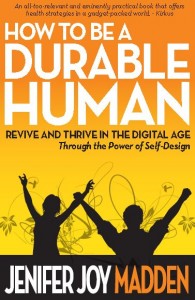 So you can put it all together—mindfully cherish your own and your family’s nature and live in harmony with your technology—I invite you to also check out the tips and tricks in How To Be a Durable Human: Revive and Thrive in the Digital Age Through the Power of Self-Design.
So you can put it all together—mindfully cherish your own and your family’s nature and live in harmony with your technology—I invite you to also check out the tips and tricks in How To Be a Durable Human: Revive and Thrive in the Digital Age Through the Power of Self-Design.
The book’s philosophy and inspiration can be found in The Durable Human Manifesto, which is on Amazon, Audible and iTunes, but you can download it for free here.
Find info about this author on Google+.


